Modelling Infectious Disease Dynamics: A Robust Computational Approach for Stochastic SIRS with Partial Immunity and an Incidence Rate
Abstract
:1. Introduction
- Epidemiological Modelling: The primary use of this computational framework is the modelling of infectious disease dynamics in populations. Because it allows researchers to examine the impact of partial immunity on disease transmission and prevalence, it is especially helpful when thinking about diseases with various levels of immunity. This is particularly important in the case of influenza, where immunity can shift from season to season due to strain changes.
- Geographical Spread Analysis: Because this model includes diffusion, it can be used to analyze the geographical spread of diseases. The ability to optimize healthcare resource allocation and implement effective control measures relies on researchers thoroughly understanding how diseases spread across geographic regions.
- Vaccination Strategy: Vaccination techniques can be tested using the model. It is useful for calculating the effects of vaccination rates, waning immunity, and partial immunity on the overall disease burden in a community. Policymakers might use these data as a reference when deciding how to proceed with vaccination drives.
- Public Health Policy Planning: Infectious disease dynamics knowledge is essential for public health policymaking. This model can shed light on how factors like incidence rates and geographic location influence the spread of disease. It is useful for determining how to allocate resources best and implement intervention techniques to reduce disease spread.
- Disease Evolution: By adding partial immunity, the model may also be used to examine how diseases change over time. The immune response to diseases like HIV is complex and changes over time, which is particularly relevant. The model can show how the disease may evolve and how therapies may alter its course.
2. Stochastic Computational Scheme
3. Stability Analysis
4. Diffusive Stochastic Epidemic Model
5. Discussions
6. Results
7. Conclusions
- Comparison showed that the proposed scheme was more accurate than the existing NSFD scheme for the deterministic model.
- Susceptible, infected, and recovered people were seen to grow by enhancing transmission parameters.
- Infected and recovered people were also grown by raising the coefficient of partial immunity.
- The proposed scheme performed better than the existing non-standard finite difference method in order of accuracy.
Author Contributions
Funding
Data Availability Statement
Acknowledgments
Conflicts of Interest
References
- Adnani, J.; Hattaf, K.; Yousfi, N. Stability Analysis of a Stochastic SIR Epidemic Model with Specific Nonlinear Incidence Rate. Int. J. Stoch. Anal. 2013, 2013, 431257. [Google Scholar] [CrossRef]
- Jehad, A.; Ghada, A.; Shah, H.; Elissa, N.; Hasib, K. Stochastic dynamics of influenza infection: Qualitative analysis and numerical results. Math. Biosci. Eng. 2022, 19, 10316–10331. [Google Scholar]
- Shah, H.; Elissa, N.; Hasib, K.; Haseena, G.; Sina, E.; Shahram, R.; Mohammed, K. On the Stochastic Modeling of COVID-19 under the Environmental White Noise. J. Funct. Spaces 2022, 2022, 4320865. [Google Scholar]
- Miaomiao, G.; Daqing, J.; Tasawar, H. Stationary distribution and periodic solution of stochasticchemostat models with single-species growthon two nutrients. Int. J. Biomath. 2019, 12, 1950063. [Google Scholar]
- Liu, Q.; Jiang, D.; Shi, N.; Hayat, T.; Alsaedi, A. Asymptotic behavior of a stochastic delayed SEIR epidemic model with nonlinear incidence. Phys. A 2016, 462, 870–882. [Google Scholar] [CrossRef]
- Tailei, Z.; Zhidong, T. Global asymptotic stability of a delayed SEIRS epidemic model with saturation incidence. Chaos Solitons Fractals 2008, 37, 1456–1468. [Google Scholar]
- Rui, X.; Zhien, M. Global stability of a SIR epidemic model with nonlinear incidence rate and time delay. Nonlinear Anal. Real World Appl. 2009, 10, 3175–3189. [Google Scholar]
- Hattaf, K.; Mahrouf, M.; Adnani, J.; Yousfi, N. Qualitative analysis of a stochastic epidemic model with specific functional response and temporary immunity. Phys. A 2018, 490, 591–600. [Google Scholar] [CrossRef]
- Pitchaimani, M.; Brasanna, D.M. Stochastic dynamical probes in a triple delayed SICR model with general incidence rate and immunization strategies. Chaos Solitons Fractals 2021, 143, 110540. [Google Scholar]
- Xu, C.; Li, X. The threshold of a stochastic delayed SIRS epidemic model with temporary immunity and vaccination. Chaos Solitons Fractals 2018, 111, 227–234. [Google Scholar] [CrossRef]
- Xianning, L.; Yasuhiro, T.; Shingo, I. SVIR epidemic models with vaccination strategies. J. Theoret. Biol. 2008, 253, 1–11. [Google Scholar]
- Zhang, X.; Jiang, D.; Hayat, T.; Ahmad, B. Dynamical behavior of a stochastic SVIR epidemic model with vaccination. Phys. A 2017, 483, 94–108. [Google Scholar] [CrossRef]
- Li, F.; Zhang, S.Q.; Meng, X.Z. Dynamics analysis and numerical simulations of a delayed stochastic epidemic model subject to a general response function. Comput. Appl. Math. 2019, 38, 95. [Google Scholar] [CrossRef]
- Hattaf, K.; Yousfi, N.; Tridane, A. Stability analysis of a virus dynamics model with general incidence rate and two delays. Appl. Math. Comput. 2013, 221, 514–521. [Google Scholar] [CrossRef]
- Wang, J.; Zhang, J.; Jin, Z. Analysis of an SIR model with bilinear incidence rate. Nonlinear Anal. Real World Appl. 2010, 11, 2390–2402. [Google Scholar] [CrossRef]
- Liu, X.; Yang, L. Stability analysis of an SEIQV epidemic model with saturated incidence rate. Nonlinear Anal. Real World Appl. 2012, 13, 2671–2679. [Google Scholar] [CrossRef]
- Zhao, Y.; Jiang, D. The threshold of a stochastic SIRS epidemic model with saturated incidence. Appl. Math. Lett. 2014, 34, 90–93. [Google Scholar] [CrossRef]
- Cantrell, R.; Cosner, C. On the dynamics of predator-prey models with the Beddington–DeAngelis functional response. J. Math. Anal. Appl. 2001, 257, 206–222. [Google Scholar] [CrossRef]
- Zhou, X.; Cui, J. Global stability of the viral dynamics with Crowley–Martin functional response. Bull. Korean Math. Soc. 2011, 48, 555–574. [Google Scholar] [CrossRef]
- Anderson, R.; Garnett, G. Low-efficacy HIV vaccines: Potential for community-based intervention programmes. Lancet 1996, 348, 1010–1013. [Google Scholar] [CrossRef]
- Chaves, S.; Gargiullo, P.; Zhang, J.; Civen, R.; Guris, D.; Mascola, L.; Seward, J. Loss of vaccine-induced immunity to varicella over time. N. Engl. J. Med. 2007, 356, 1121–1129. [Google Scholar] [CrossRef] [PubMed]
- Wendelboe, A.; Van Rie, A.; Salmaso, S.; Englund, J. Duration of immunity against pertussis after natural infection or vaccination. Pediatr. Infect. Dis. J. 2005, 24, 58–61. [Google Scholar] [CrossRef] [PubMed]
- Craig, M.P. An evolutionary epidemiological mechanism, with applications to type a influenza. Theor. Popul. Biol. 1987, 31, 422–452. [Google Scholar]
- Nowak, M.A.; Bonhoeffer, S.; Hill, A.M.; Boehme, R.; Thomas, H.C.; McDade, H. Viral dynamics in hepatitis B virus infection. Proc. Natl. Acad. Sci. USA 1996, 93, 4398–4402. [Google Scholar] [CrossRef]
- Wang, K.; Wang, W. Propagation of HBV with spatial dependence. Math. Biosci. 2007, 210, 78–95. [Google Scholar] [CrossRef] [PubMed]
- Suryanto, A.; Darti, I. On the non-standard numerical discretization of SIR epidemic model with a saturated incidence rate and vaccination. AIMS Math. 2021, 6, 141–155. [Google Scholar] [CrossRef]
- Naik, P.A.; Zu, J.; Ghoreishi, M. Stability analysis and approximate solution of SIR epidemic model with Crowley–Martin type functional response and holling type-II treatment rate by using homotopy analysis method. J. Appl. Anal. Comput. 2020, 10, 1482–1515. [Google Scholar]
- Ahmad, I.; Khan, M.N.; Inc, M.; Ahmad, H.; Nisar, K.S. Numerical simulation of simulate an anomalous solute transport model via local meshless method. Alex. Eng. J. 2020, 59, 2827–2838. [Google Scholar] [CrossRef]
- Ahmad, H.; Akgül, A.; Khan, T.A.; Stanimirovic, P.S.; Chu, Y.M. New perspective on the conventional solutions of the nonlinear time-fractional partial differential equations. Complexity 2020, 2020, 8829017. [Google Scholar] [CrossRef]
- Ahmad, H.; Khan, T.A.; Stanimirovic, P.S.; Ahmad, I. Modified variational iteration technique for the numerical? solution of fifth order KdV-type equations. J. Appl. Comput. Mech. 2020, 6, 1220–1227. [Google Scholar]
- Ahmad, H.; Seadawy, A.R.; Khana, T.A. Modified variational iteration algorithm to find approximate solutions of nonlinear Parabolic equation. Math. Comput. Simul. 2020, 177, 13–23. [Google Scholar] [CrossRef]
- Ahmad, I.; Ahmad, H.; Inc, M.; Yao, S.W.; Almohsen, B. Application of local meshless method for the solution of two term time fractional-order multi-dimensional PDE arising in heat and mass transfer. Therm. Sci. 2020, 24 (Suppl. S1), 95–105. [Google Scholar] [CrossRef]
- Inc, M.; Khan, M.N.; Ahmad, I.; Yao, S.W.; Ahmad, H.; Thounthong, P. Analysing time-fractional exotic options via efficient local meshless method. Results Phys. 2020, 19, 103385. [Google Scholar] [CrossRef]
- Khan, M.N.; Ahmad, I.; Ahmad, H. A Radial Basis Function Collocation Method for Space-dependent? Inverse Heat Problems. J. Appl. Comput. Mech. 2020. Available online: https://jacm.scu.ac.ir/article_15512_e7b25d7b217ff1267e45fc596fbfa54b.pdf (accessed on 22 November 2023).
- Shah, N.A.; Ahmad, I.; Bazighifan, O.; Abouelregal, A.E.; Ahmad, H. Multistage optimal homotopy asymptotic method for the nonlinear Riccati ordinary differential equation in nonlinear physics. Appl. Math. 2020, 14, 1009–1016. [Google Scholar]
- Wang, F.; Ali, S.N.; Ahmad, I.; Ahmad, H.; Alam, K.M.; Thounthong, P. Solution of Burgers’ equation appears in fluid mechanics by multistage optimal homotopy asymptotic method. Therm. Sci. 2022, 26 1 Pt B, 815–821. [Google Scholar] [CrossRef]
- Liu, X.; Ahsan, M.; Ahmad, M.; Nisar, M.; Liu, X.; Ahmad, I.; Ahmad, H. Applications of Haar wavelet-finite difference hybrid method and its convergence for hyperbolic nonlinear Schrö dinger equation with energy and mass conversion. Energies 2021, 14, 7831. [Google Scholar] [CrossRef]
- Ahsan, M.; Lin, S.; Ahmad, M.; Nisar, M.; Ahmad, I.; Ahmed, H.; Liu, X. A Haar wavelet-based scheme for finding the control parameter in nonlinear inverse heat conduction equation. Open Phys. 2021, 19, 722–734. [Google Scholar] [CrossRef]
- Yasin, M.W.; Ahmed, N.; Iqbal, M.S.; Rafiq, M.; Raza, A.; Akgül, A. Reliable numerical analysis for stochastic reaction–diffusion system. Phys. Scr. 2022, 98, 015209. [Google Scholar] [CrossRef]
- Wang, X.; Yasin, M.W.; Ahmed, N.; Rafiq, M.; Abbas, M. Numerical approximations of stochastic Gray–Scott model with two novel schemes. AIMS Math. 2023, 8, 5124–5147. [Google Scholar] [CrossRef]
- Yasin, M.W.; Ahmed, N.; Iqbal, M.S.; Raza, A.; Rafiq, M.; Eldin, E.M.T.; Khan, I. Spatio-temporal numerical modeling of stochastic predator–prey model. Sci. Rep. 2023, 13, 1990. [Google Scholar] [CrossRef] [PubMed]
- Macías-Díaz, J.E.; Raza, A.; Ahmed, N.; Rafiq, M. Analysis of a non-standard computer method to simulate a nonlinear stochastic epidemiological model of coronavirus-like diseases. Comput. Methods Prog. Biomed. 2021, 204, 106054. [Google Scholar] [CrossRef] [PubMed]
- Raza, A.; Rafiq, M.; Ahmed, N.; Khan, I.; Nisar, K.S.; Iqbal, Z. A structure preserving numerical method for solution of stochastic epidemic model of smoking dynamics. Comput. Mater. Contin. 2020, 65, 263–278. [Google Scholar] [CrossRef]
- Ahmed, N.; Macías-Díaz, J.E.; Raza, A.; Baleanu, D.; Rafiq, M.; Iqbal, Z.; Ahmad, M.O. Design analysis and comparison of a non-standard computational method for the solution of a general stochastic fractional epidemic model. Axioms 2021, 11, 10. [Google Scholar] [CrossRef]
- Raza, A.; Arif, M.S.; Rafiq, M. A reliable numerical analysis for stochastic dengue epidemic model with incubation period of virus. Adv. Differ. Equ. 2019, 2019, 32. [Google Scholar] [CrossRef]
- Alkhazzan, A.; Wang, J.; Nie, Y.; Hattaf, K. A new stochastic split-step θ-nonstandard finite difference method for the developed SVIR epidemic model with temporary immunities and general incidence rates. Vaccines 2022, 10, 1682. [Google Scholar] [CrossRef]
- Ali, A.; Alshammari, F.S.; Islam, S.; Khan, M.A.; Ullah, S. Modeling and analysis of the dynamics of novel coronavirus (COVID-19) with Caputo fractional derivative. Results Phys. 2021, 20, 103669. [Google Scholar] [CrossRef]
- Ali, A.; Islam, S.; Rasheed, S.; Allehiany, F.; Baili, J.; Khan, M.A.; Ahmad, H. Dynamics of a fractional order Zika virus model with mutant. Alex. Eng. J. 2022, 61, 4821–4836. [Google Scholar] [CrossRef]
- Aba Oud, M.A.; Ali, A.; Alrabaiah, H.; Ullah, S.; Khan, M.A.; Islam, S. A fractional order mathematical model for COVID-19 dynamics with quarantine, isolation, and environmental viral load. Adv. Differ. Equ. 2021, 2021, 106. [Google Scholar] [CrossRef]
- Ali, A.; Ullah, S.; Khan, M.A. The impact of vaccination on the modeling of COVID-19 dynamics: A fractional order model. Nonlinear Dyn. 2022, 110, 3921–3940. [Google Scholar] [CrossRef]
- Li, P.; Peng, X.; Xu, C.; Han, L.; Shi, S. Novel extended mixed controller design for bifurcation control of fractional-order Myc/E2F/miR-17-92 network model concerning delay. Math. Methods Appl. Sci. 2023, 46, 18878–18898. [Google Scholar] [CrossRef]
- Wang, J.; Teng, Z.; Dai, B. Qualitative analysis of a reaction-diffusion SIRS epidemic model with nonlinear incidence rate and partial immunity. Infect. Dis. Model. 2023, 8, 881e911. [Google Scholar] [CrossRef] [PubMed]
- Pasha, S.A.; Nawaz, Y.; Arif, M.S. On the non-standard finite difference method for reaction–diffusion models. Chaos Solitons Fractals 2023, 166, 112929. [Google Scholar] [CrossRef]
- Arif, M.S.; Abodayeh, K.; Nawaz, Y. Construction of a Computational Scheme for the Fuzzy HIV/AIDS Epidemic Model with a Nonlinear Saturated Incidence Rate; Tech Science Press: Norwood, MA, USA, 2023. [Google Scholar] [CrossRef]
- Arif, M.S.; Abodayeh, K.; Nawaz, Y. A Reliable Computational Scheme for Stochastic Reaction–Diffusion Nonlinear Chemical Model. Axioms 2023, 12, 460. [Google Scholar] [CrossRef]
- Nawaz, Y.; Arif, M.S.; Bibi, K.A.A.M. Finite Difference Schemes for Time-Dependent Convection q-Diffusion Problem. AIMS Math. 2022, 7, 16407–16421. [Google Scholar] [CrossRef]
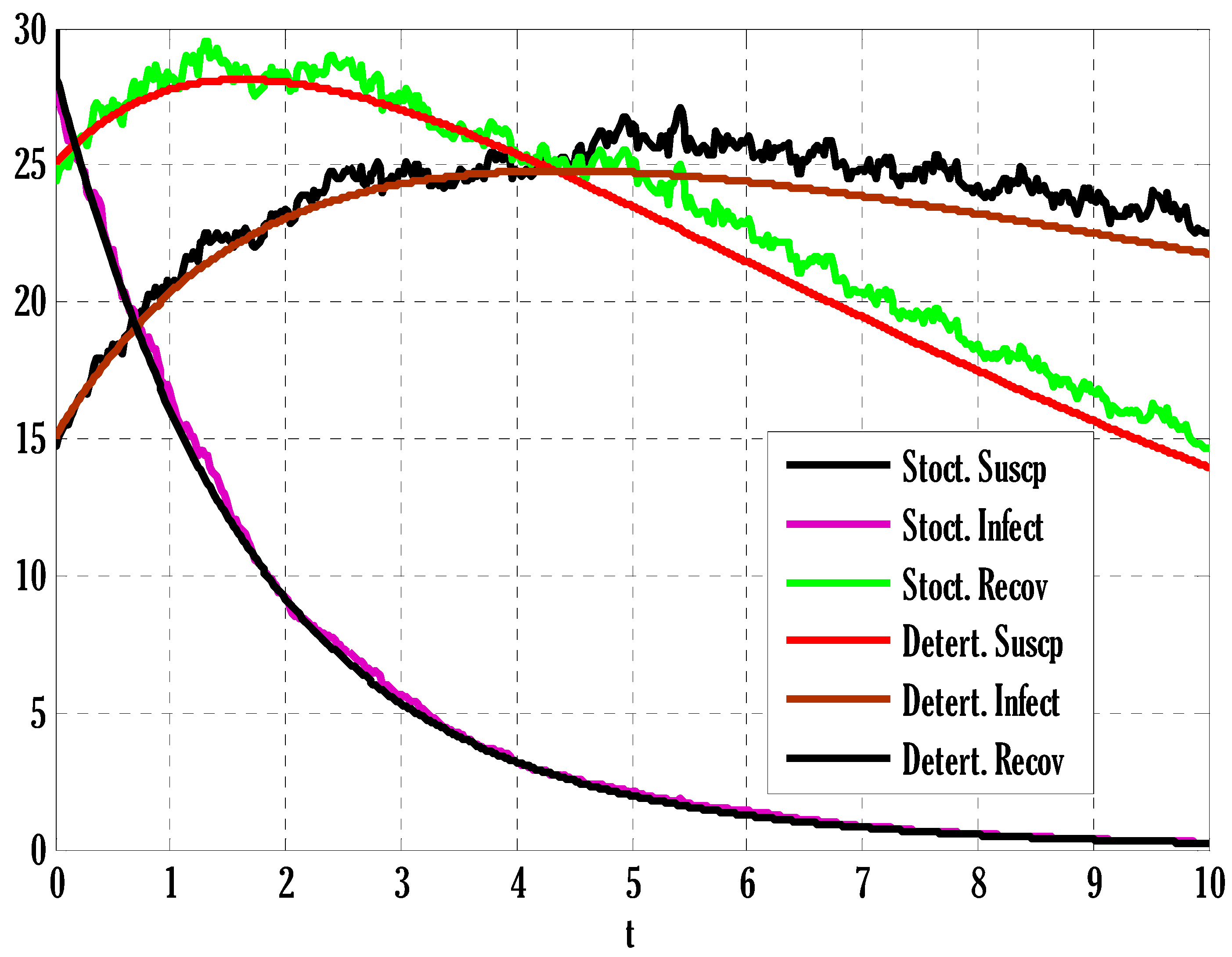
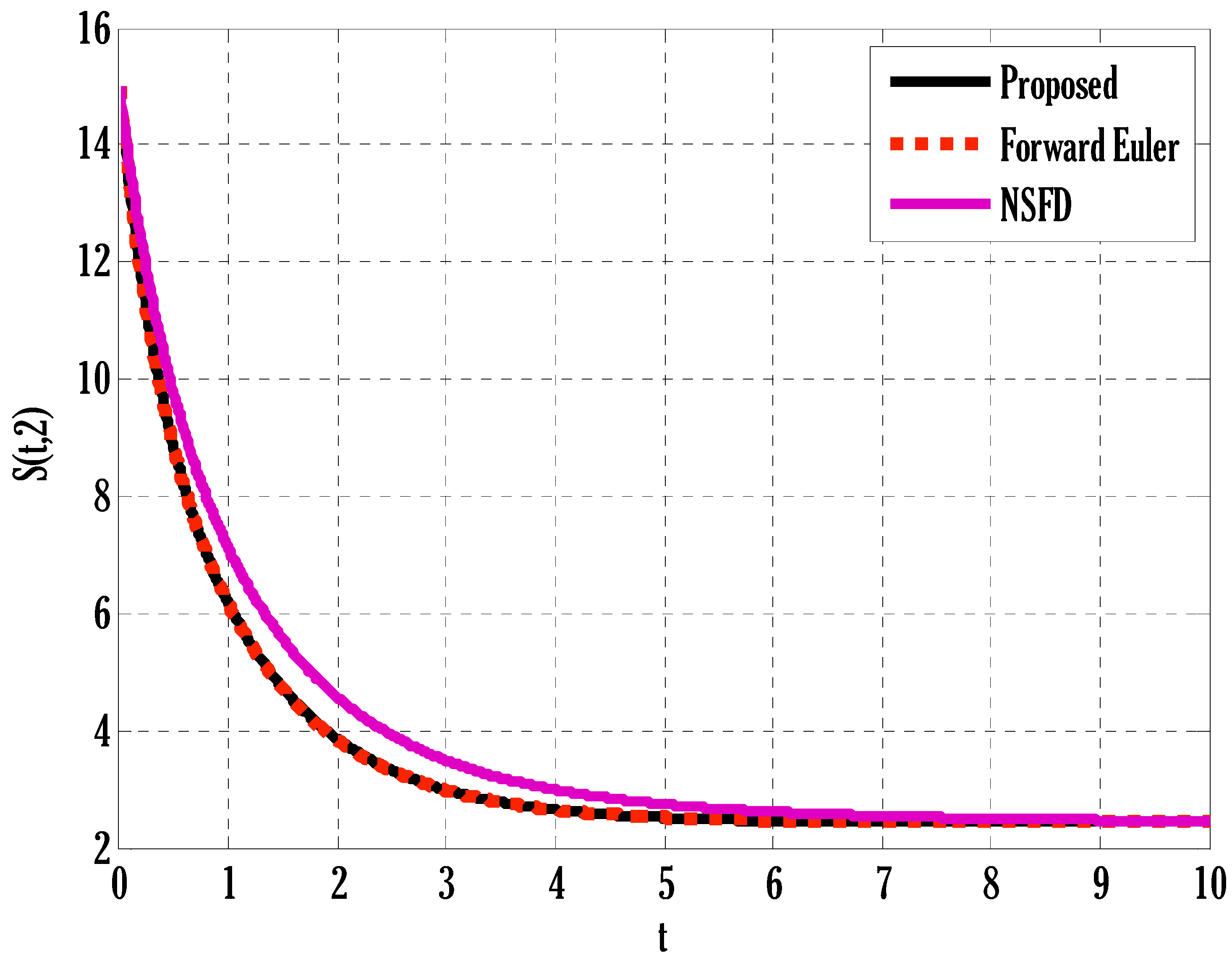
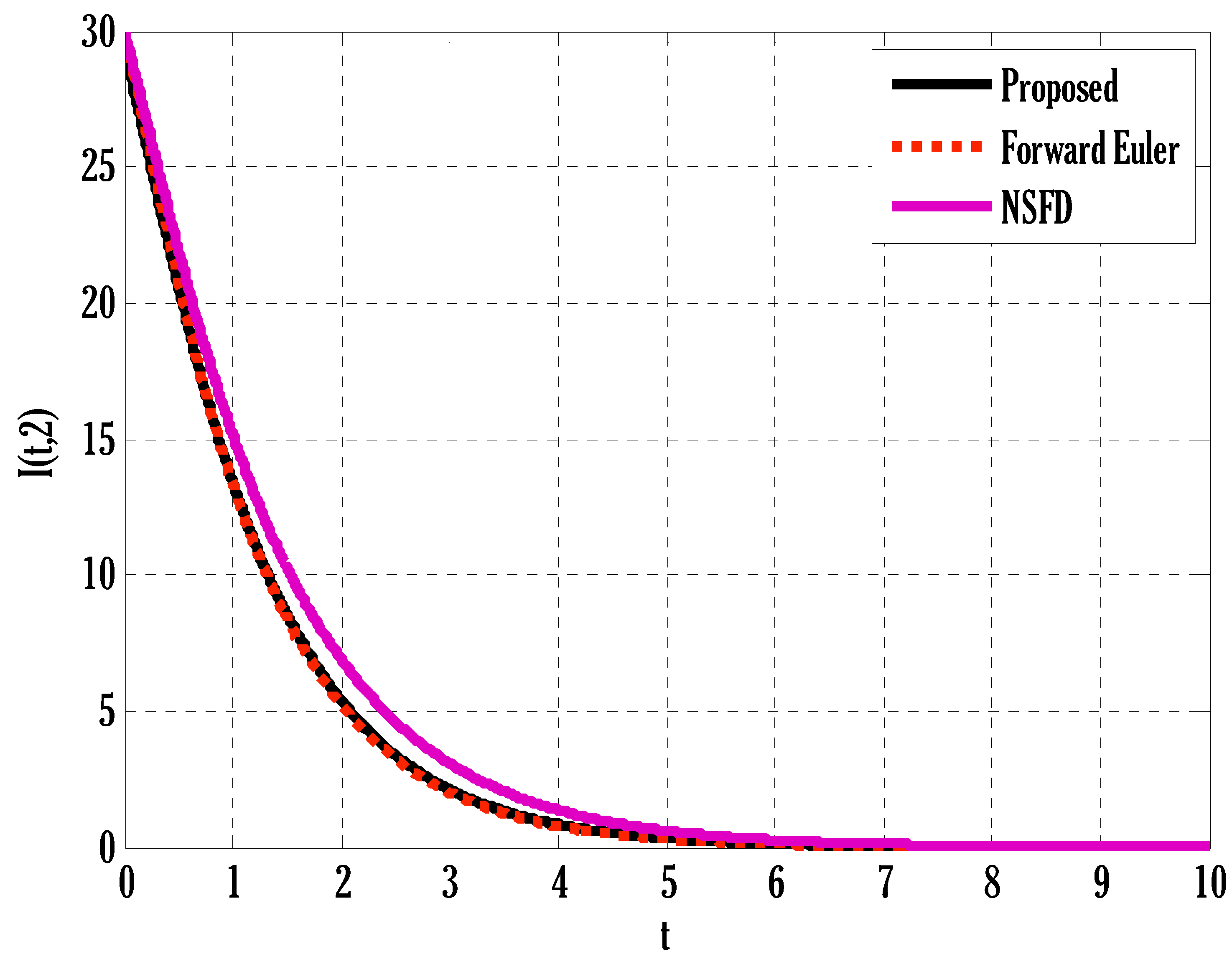

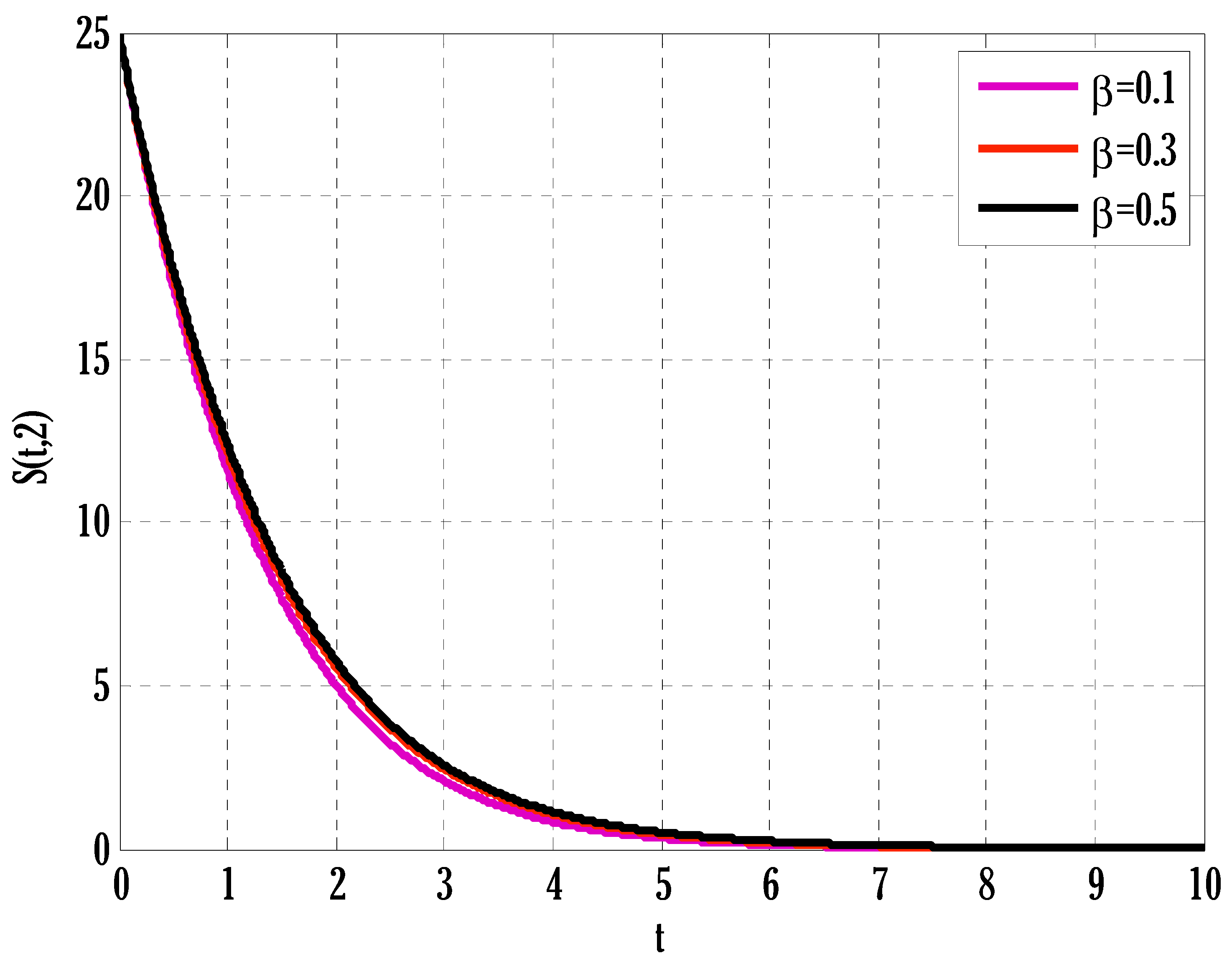
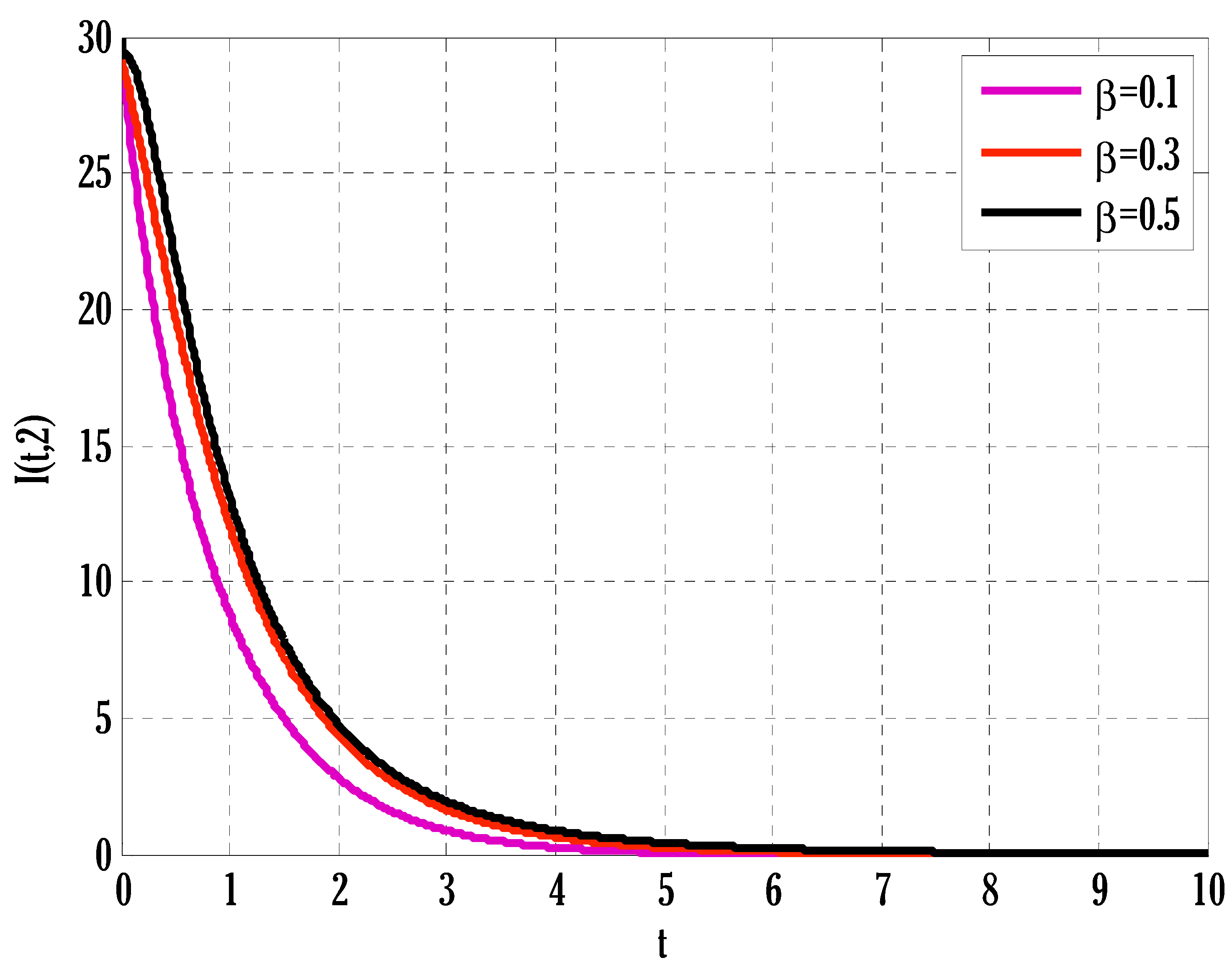


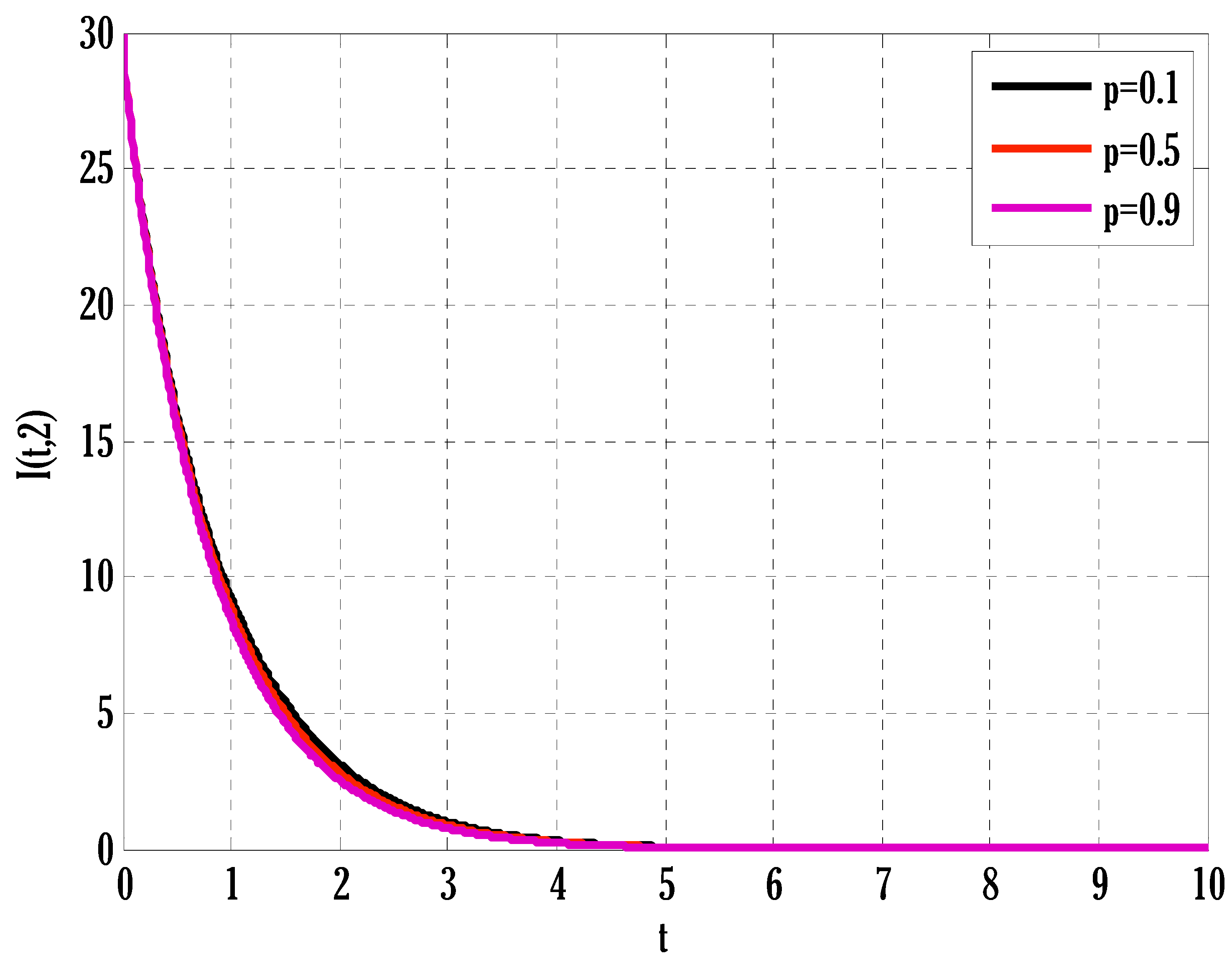
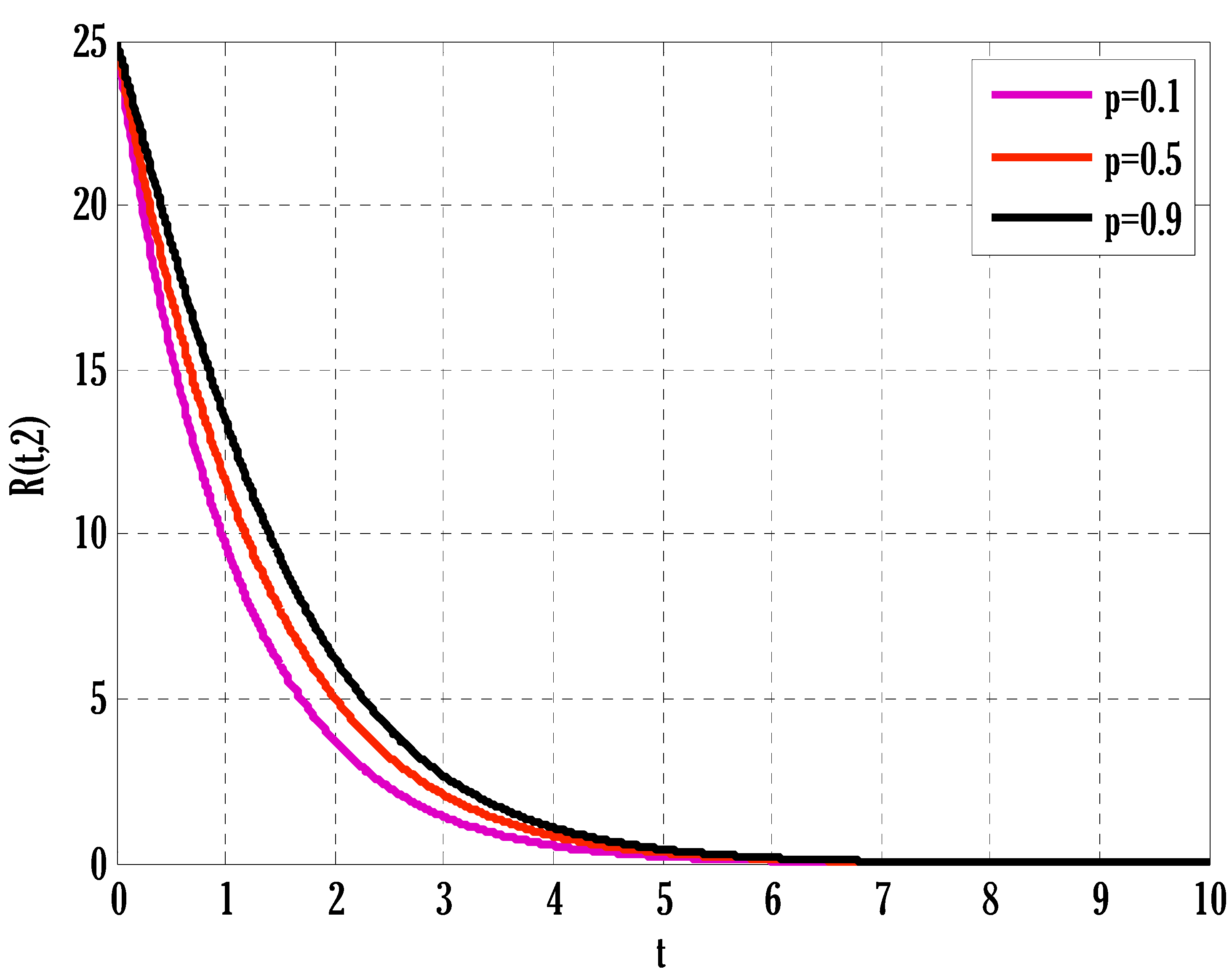
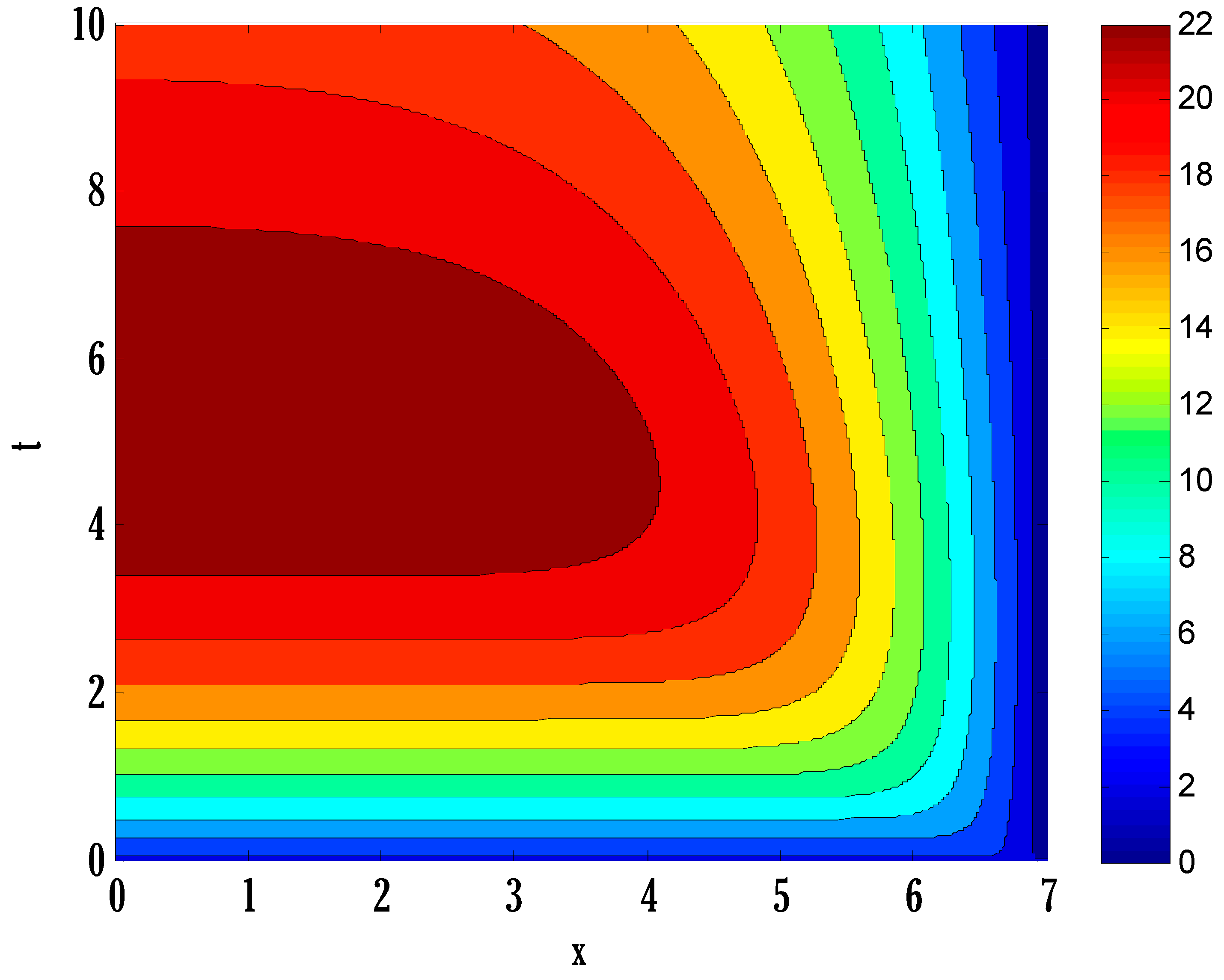
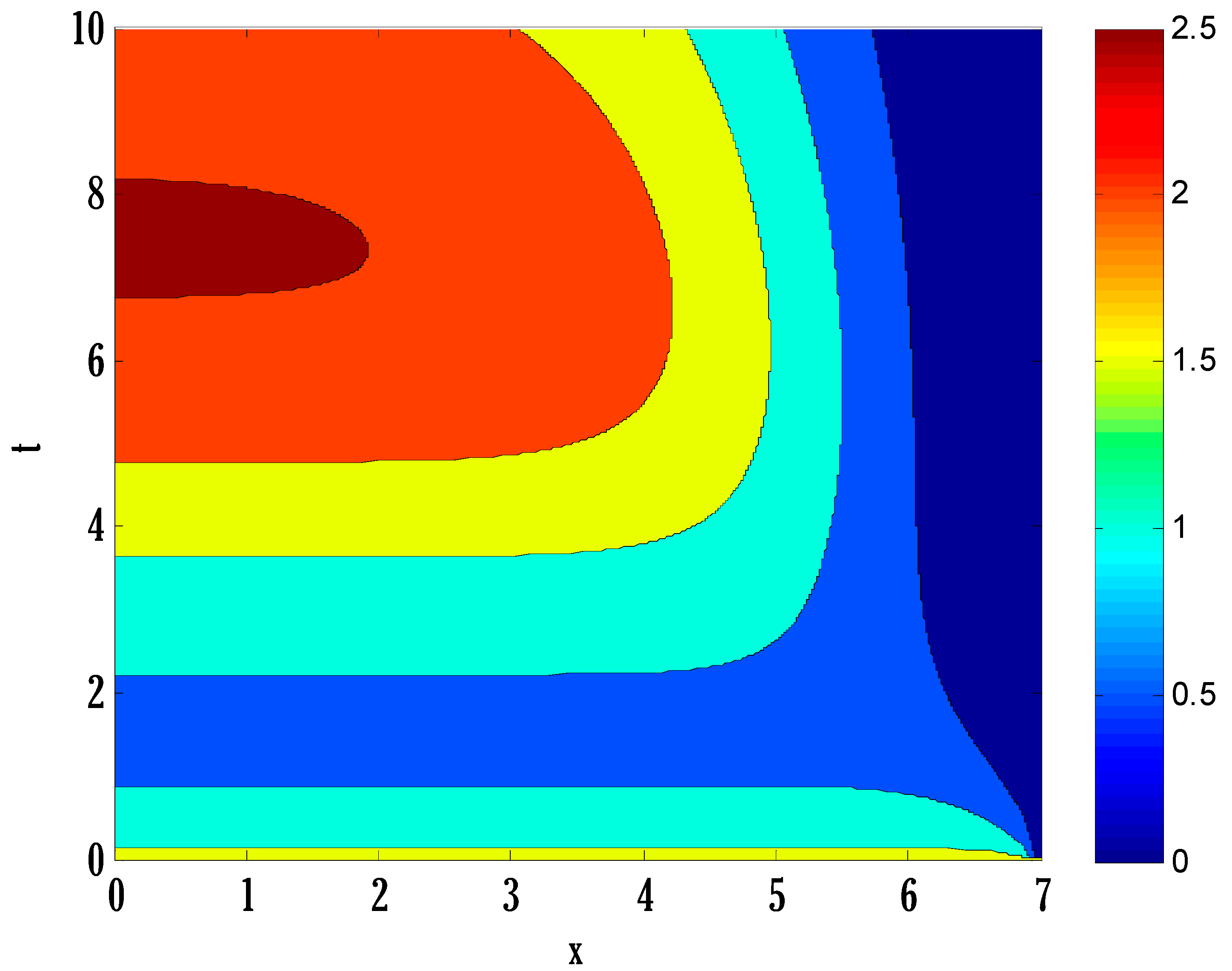
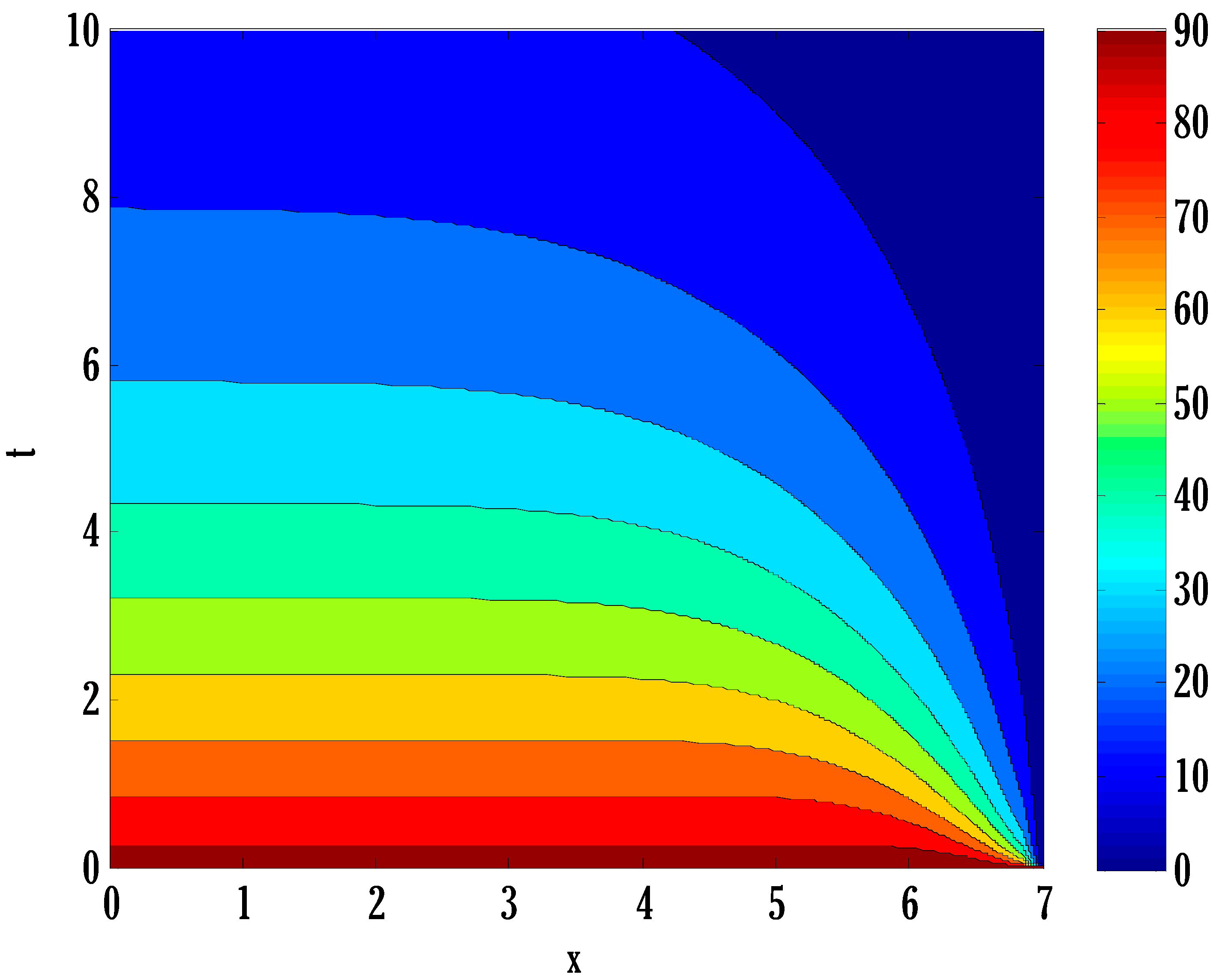

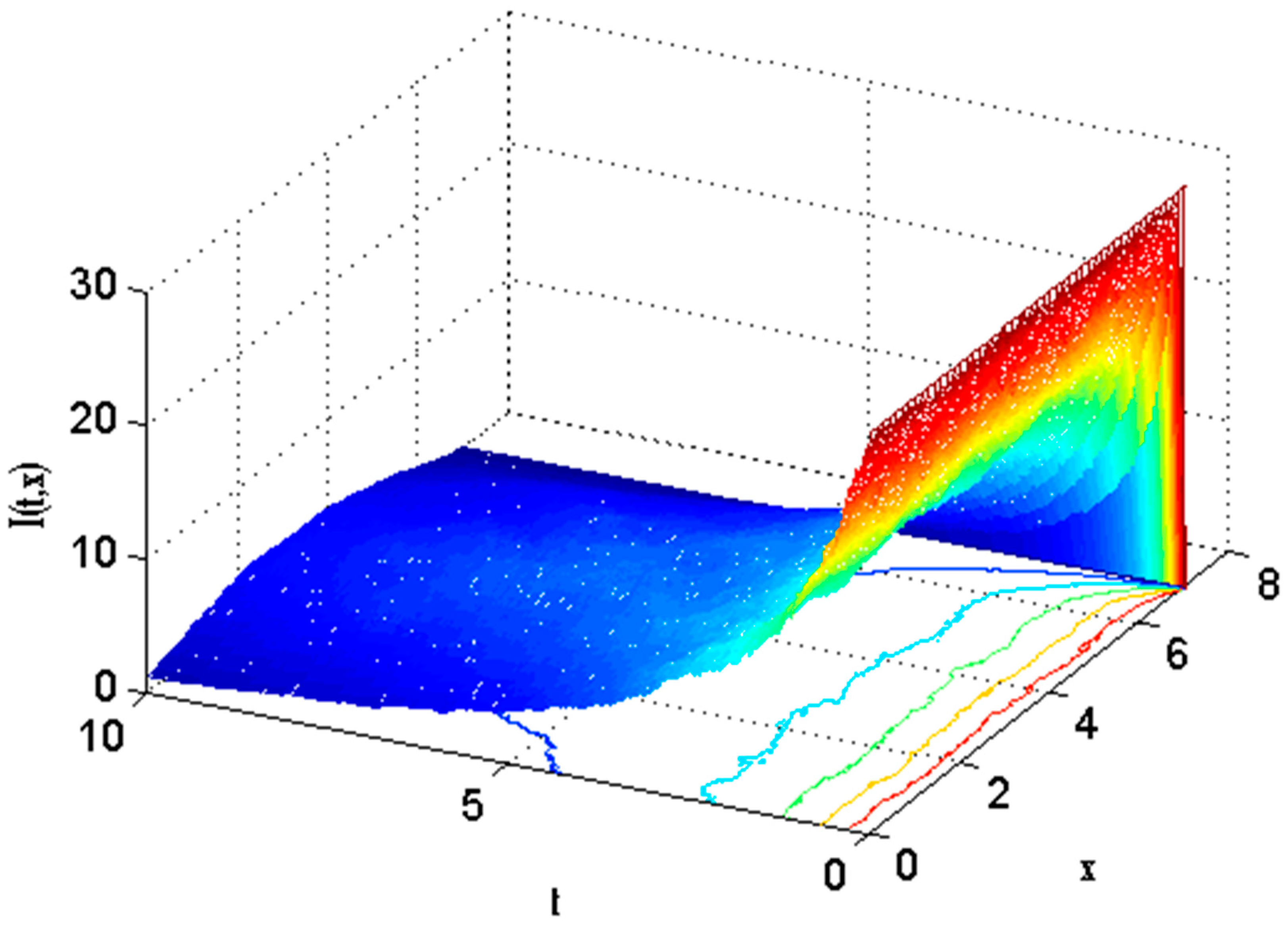
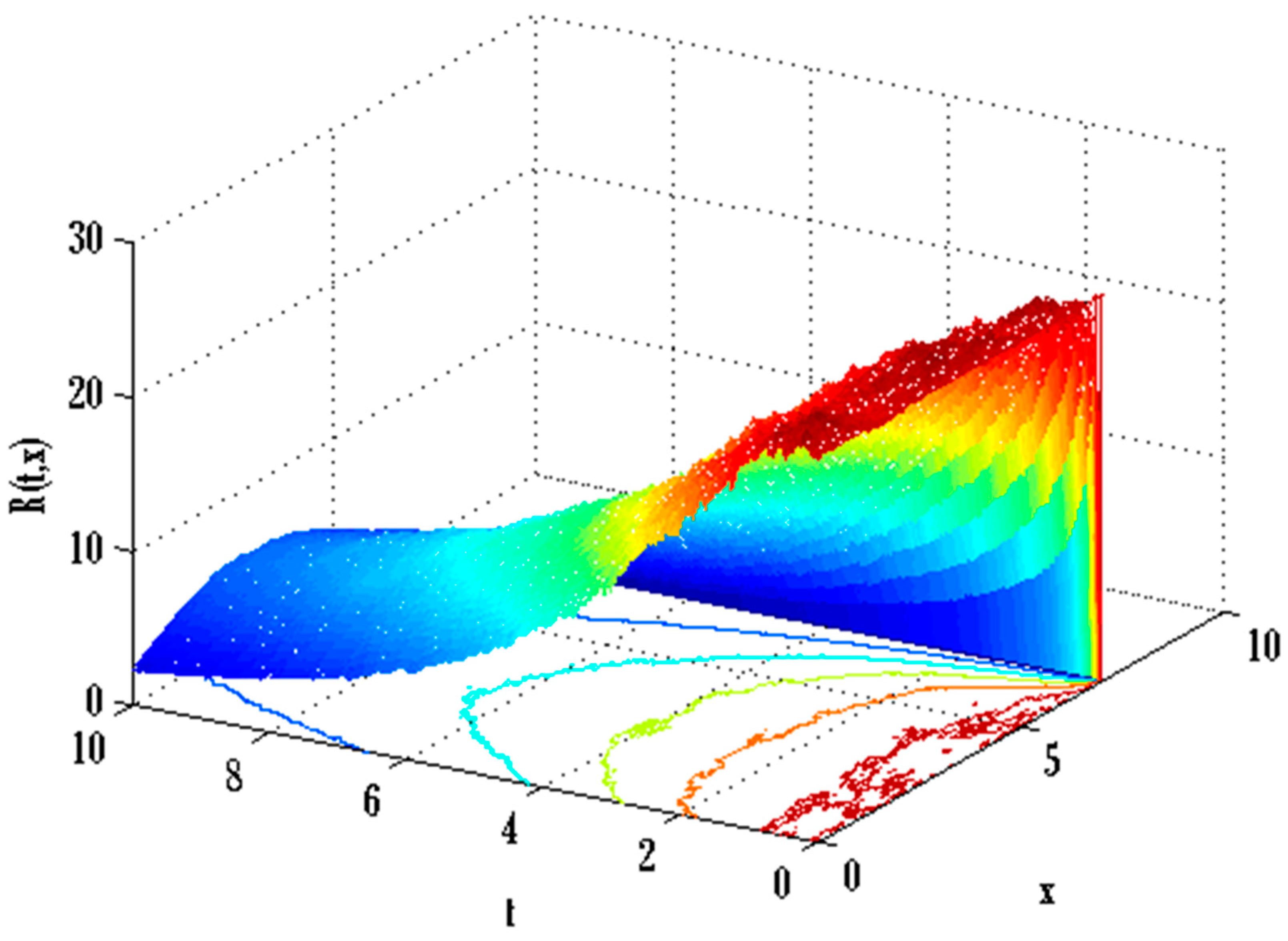
Disclaimer/Publisher’s Note: The statements, opinions and data contained in all publications are solely those of the individual author(s) and contributor(s) and not of MDPI and/or the editor(s). MDPI and/or the editor(s) disclaim responsibility for any injury to people or property resulting from any ideas, methods, instructions or products referred to in the content. |
© 2023 by the authors. Licensee MDPI, Basel, Switzerland. This article is an open access article distributed under the terms and conditions of the Creative Commons Attribution (CC BY) license (https://creativecommons.org/licenses/by/4.0/).
Share and Cite
Baazeem, A.S.; Nawaz, Y.; Arif, M.S.; Abodayeh, K.; AlHamrani, M.A. Modelling Infectious Disease Dynamics: A Robust Computational Approach for Stochastic SIRS with Partial Immunity and an Incidence Rate. Mathematics 2023, 11, 4794. https://doi.org/10.3390/math11234794
Baazeem AS, Nawaz Y, Arif MS, Abodayeh K, AlHamrani MA. Modelling Infectious Disease Dynamics: A Robust Computational Approach for Stochastic SIRS with Partial Immunity and an Incidence Rate. Mathematics. 2023; 11(23):4794. https://doi.org/10.3390/math11234794
Chicago/Turabian StyleBaazeem, Amani S., Yasir Nawaz, Muhammad Shoaib Arif, Kamaleldin Abodayeh, and Mae Ahmed AlHamrani. 2023. "Modelling Infectious Disease Dynamics: A Robust Computational Approach for Stochastic SIRS with Partial Immunity and an Incidence Rate" Mathematics 11, no. 23: 4794. https://doi.org/10.3390/math11234794
APA StyleBaazeem, A. S., Nawaz, Y., Arif, M. S., Abodayeh, K., & AlHamrani, M. A. (2023). Modelling Infectious Disease Dynamics: A Robust Computational Approach for Stochastic SIRS with Partial Immunity and an Incidence Rate. Mathematics, 11(23), 4794. https://doi.org/10.3390/math11234794








